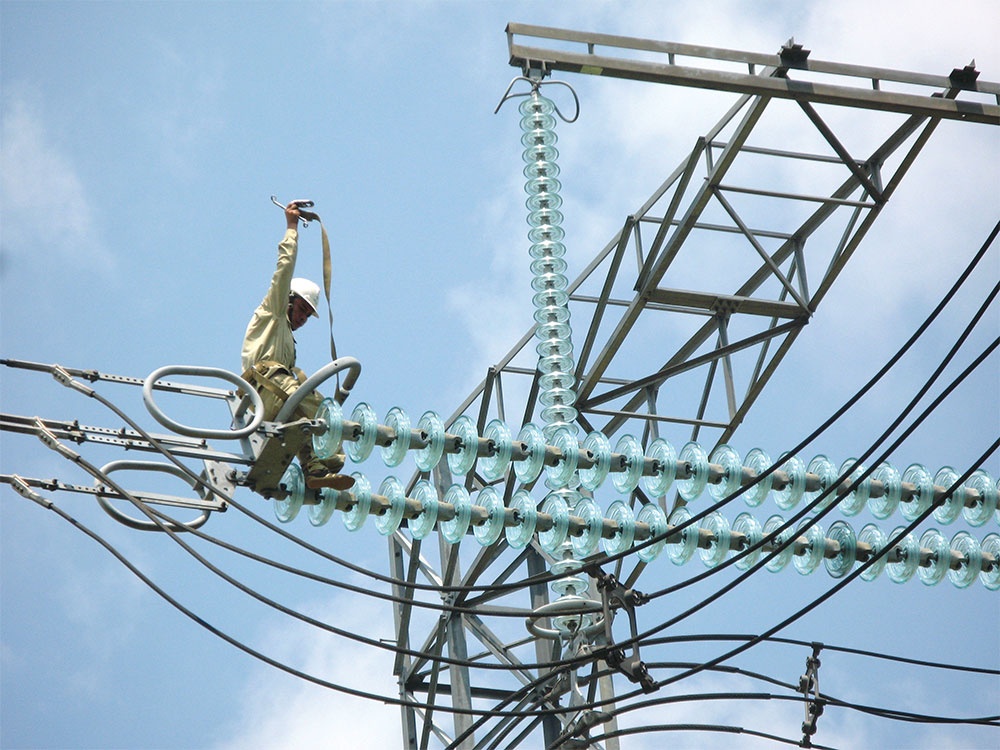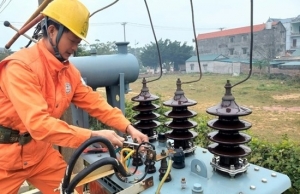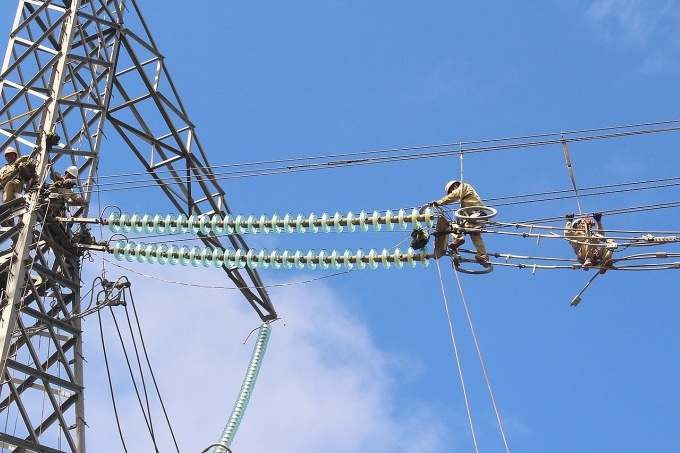Neighbourly efforts in tow to aid electricity prospects
According to Vo Quang Lam, deputy general director of Electricity of Vietnam (EVN), the state utility will increase its imports of electricity from China and Laos to supplement domestic power supply. EVN is attempting to ensure electricity supply for the rest of this quarter, which is the most challenging time of year in terms of ensuring supply.
“The increase in electricity capacity imported from Laos can be accomplished this year. EVN is currently awaiting Laos’ completion of the line to connect Vietnam’s imports of electricity to the line system running through the Tuong Duong district of Nghe An province,” Lam said.
 |
| Neighbourly efforts in tow to aid electricity prospects, illustration photo/ Le Toan |
EVN is currently in negotiations with Yunnan International Co., Ltd. to raise output and purchasing capacity on current 220kV lines and to purchase additional electricity through 110kV lines. Vietnam imports electricity from China via the provinces of Ha Giang and Lao Cai, but it is “challenging to expand its capacity due to the constraints of 220kV lines,” according to Lam.
“EVN is examining the possibility of importing electricity through the 500kV line at this juncture,” he said.
This plan is anticipated to be operational after 2025, after addressing frequency and generator fluctuations, improving the line, and installing a voltage transfer gateway to bring electricity to Vietnam.
The Ministry of Industry and Trade (MoIT) had established the electricity production and import plan for 2023 based on a scenario with a 6.5 per cent GDP growth rate and commercial electricity consumption near 251.3 billion kWh, a rise of nearly nine billion kWh from 2022. According to the power system supply and operation plan authorised by the MoIT, the total output of produced and imported electricity in 2023 will be 284.5 billion kWh.
Currently, Vietnam hopes to accelerate its electricity import initiatives, but there remain numerous hurdles in the way. Nguyen Khang, vice head of EVN’s Power Projects Management Board 2, stated that the intricate landscape and slow ground clearance are the biggest obstacles that influence the building of the Bo Y 220kV switching station and 220kV transmission line to import electricity from the Nam Kong 1-3 Dam Hydropower Cluster in Laos.
“Two-thirds of the demolition station project is on the hill and one-third is in the valley. Consequently, many sections must be fortified to ensure safety,” Khang explained.
The efforts of energy industry authorities are essential, but according to analysts, it may be insufficient to regard electricity imports as an effective means of ensuring the economy’s electricity supply. The policy of importing electricity was outlined in the fifth Power Development Plan at the turn of the century, but the strategy of importing electricity from neighbouring countries is not yet explicit and synchronised, and both the output and imported power capacity are still quite modest.
According to the MoIT, Vietnam imported 953 million kWh during the first quarter of 2023, representing just 1.5 per cent of the system’s electricity source.
Burdensome procedures and low average electricity prices are a significant barrier to electricity imports at present. Additionally, technical and operational obstacles impact the magnitude of electricity imports. The inability to synchronise the power systems of Vietnam, China, and Laos has resulted in the distinct operation of the complete power infrastructure, which receives electricity from those countries and sends it to Vietnam.
A number of analysts concur that Vietnam’s reliance on imported energy will increase. Regarding Vietnam’s three neighbours of China, Laos, and Cambodia, the potential to import electricity from the former two by 2030 is approximately 7,000MW. However, Cambodia’s hydropower potential is insufficient to support significant long-term imports of electricity.
One energy developer told VIR that Vietnam must promptly establish a profitable, open, and strictly controlled domestic electricity market if it wishes to increase the amount of electricity imported from abroad. The macro and long-term commitments on electricity trade between Vietnam and Laos and Vietnam and China must also be authorised; consider this a prerequisite for the construction of a dedicated transmission infrastructure for long-term electricity import, which will help to optimise grid investment capital and reduce land funds for transmission lines.
A representative of one energy institution added that, given that conventional sources of electricity are becoming more challenging to construct, the increase in electricity imports becomes significant. As a consequence, analysts concur that imports of electricity from neighbouring countries, such as Laos and Cambodia, should be considered a significant source of energy.
 | Mong Cai city imports electricity China’s Dongxing The Mong Cai (Vietnam) - Dongxing (China) 110kV transmission line was completed and put into operation at 6 am on May 22, adding power supply to Mong Cai city in the northeastern province of Quang Ninh, according to the Mong Cai City Electricity. |
 | EVN intends to raise electricity prices from September EVN considers that the 3 per cent rise in electricity prices enacted at the start of May 2023 has not been sufficient to cover its costs. The energy provider is seeking permission to adjust the price from September 1 to counterbalance the additional expense incurred from high input costs to ensure the company's financial stability. |
What the stars mean:
★ Poor ★ ★ Promising ★★★ Good ★★★★ Very good ★★★★★ Exceptional
Related Contents
Latest News
More News
- CME Solar strengthens position in Vietnamese renewables (December 30, 2025 | 11:21)
- Self-care signals shift towards sustainable healthcare (December 30, 2025 | 10:12)
- GreenYellow marks five years of clean energy growth in Vietnam (December 26, 2025 | 15:51)
- TCP Group partner with VNUS to launch water conservation project (December 25, 2025 | 14:00)
- Heavy industries set for pilot greenhouse gas quotas (December 25, 2025 | 10:00)
- Swedfund invests in MSME growth and climate action in Vietnam (December 19, 2025 | 11:42)
- GreenYellow brings solar energy to light up remote schools in Tuyen Quang province (December 19, 2025 | 08:00)
- Charge+, Grab partner to develop EV charging network in Vietnam (December 18, 2025 | 17:11)
- Linking sci-tech and innovation to Vietnam’s net-zero future (December 18, 2025 | 14:31)
- Driving double-digit growth through green and circular transformation in Vietnam (December 17, 2025 | 09:00)

 Tag:
Tag:




















 Mobile Version
Mobile Version